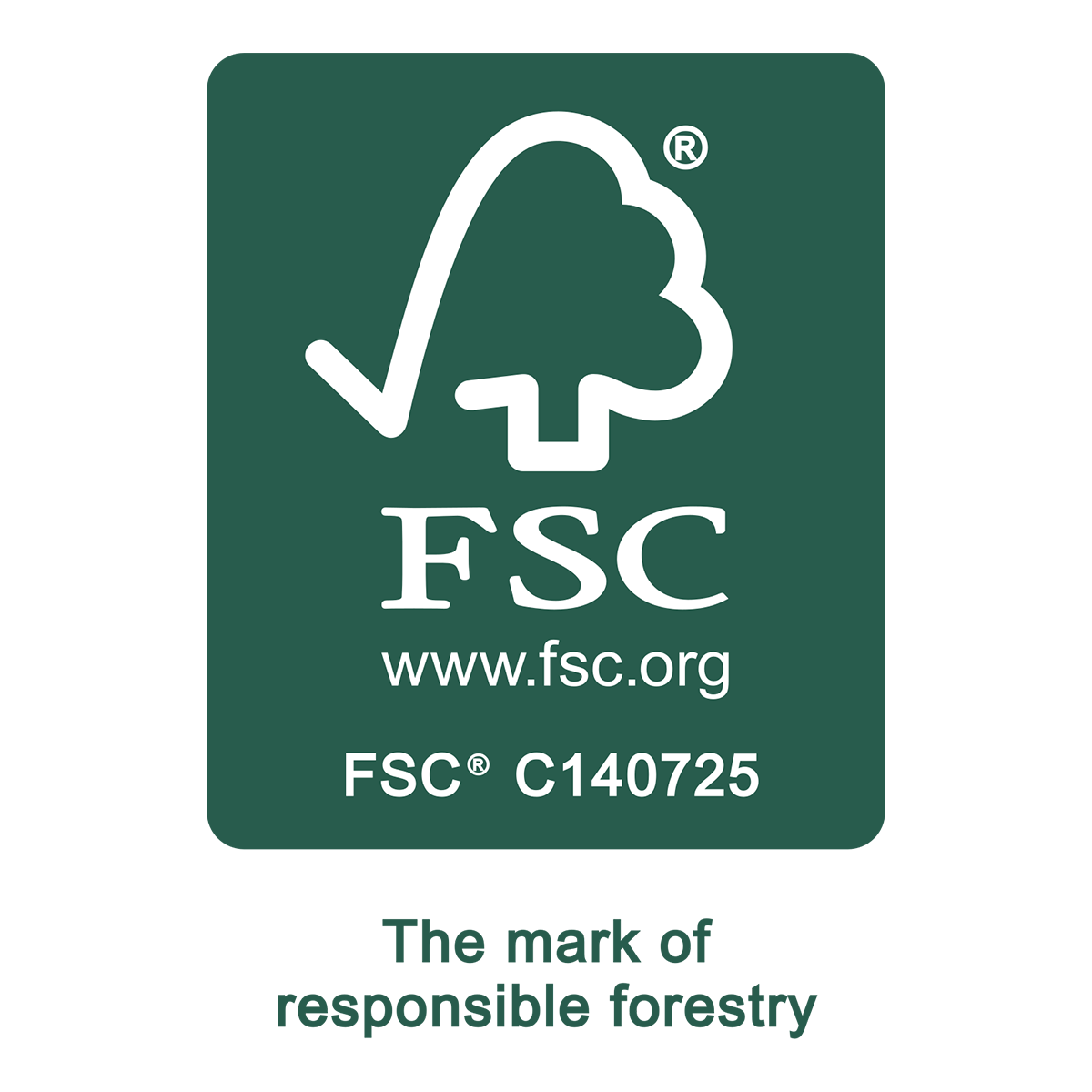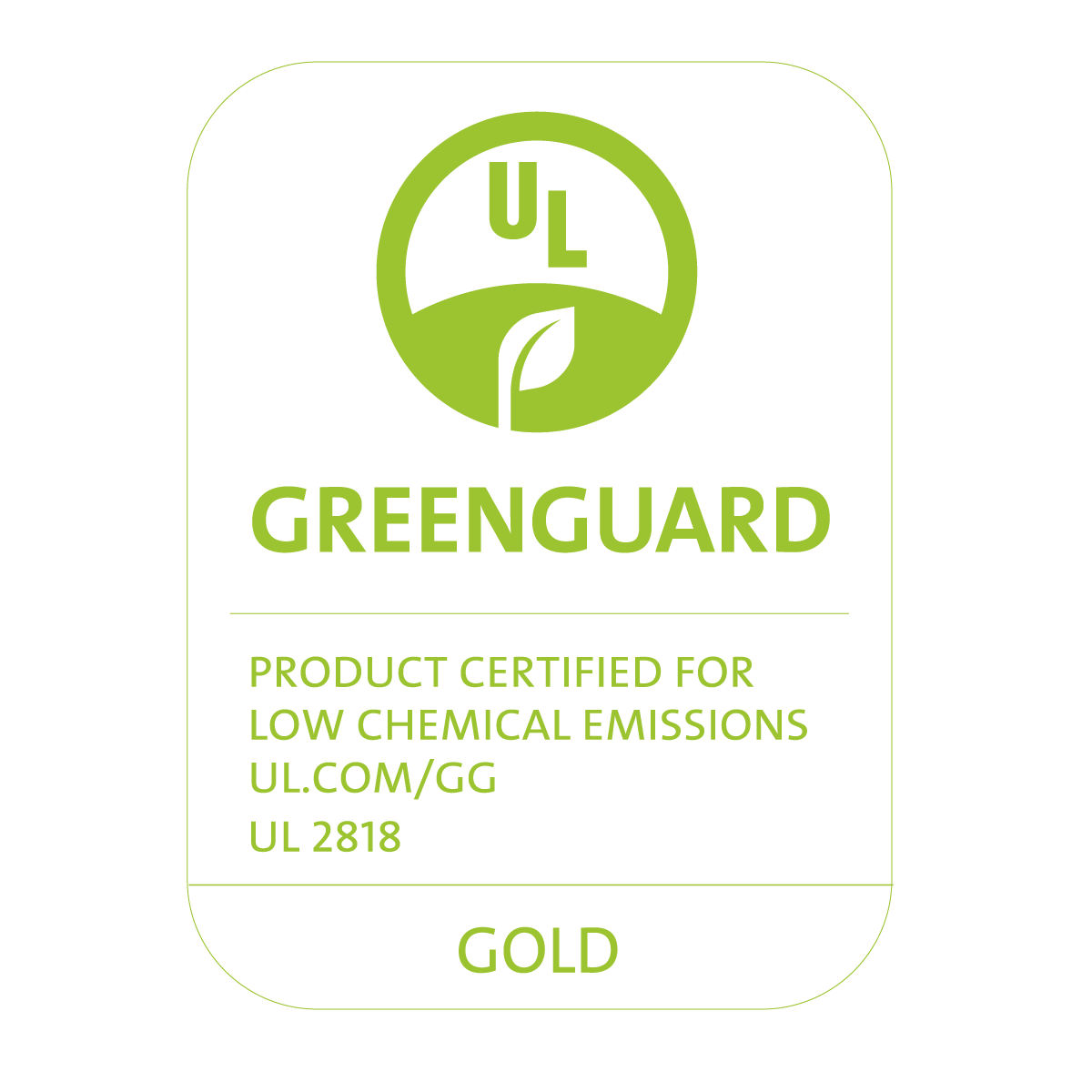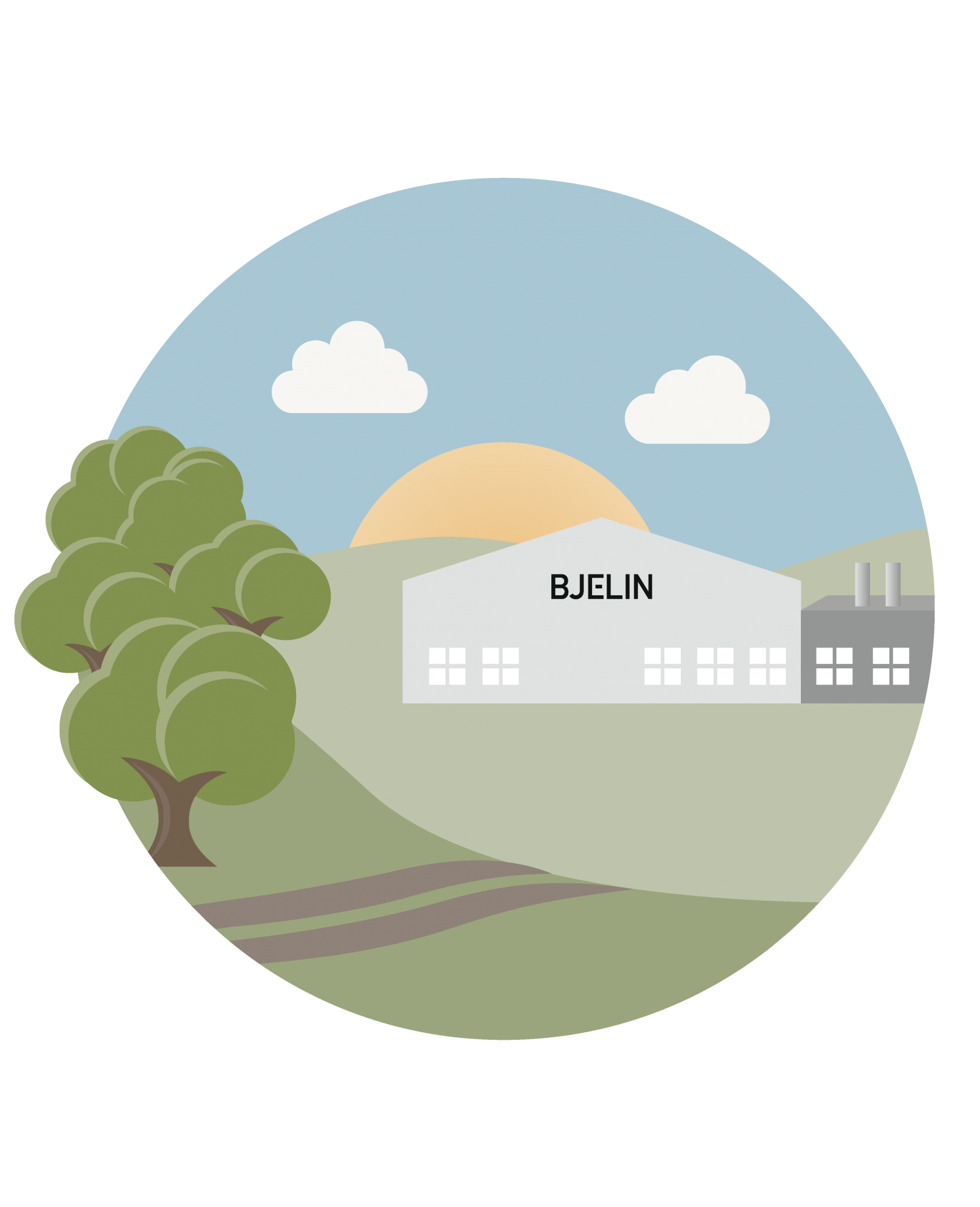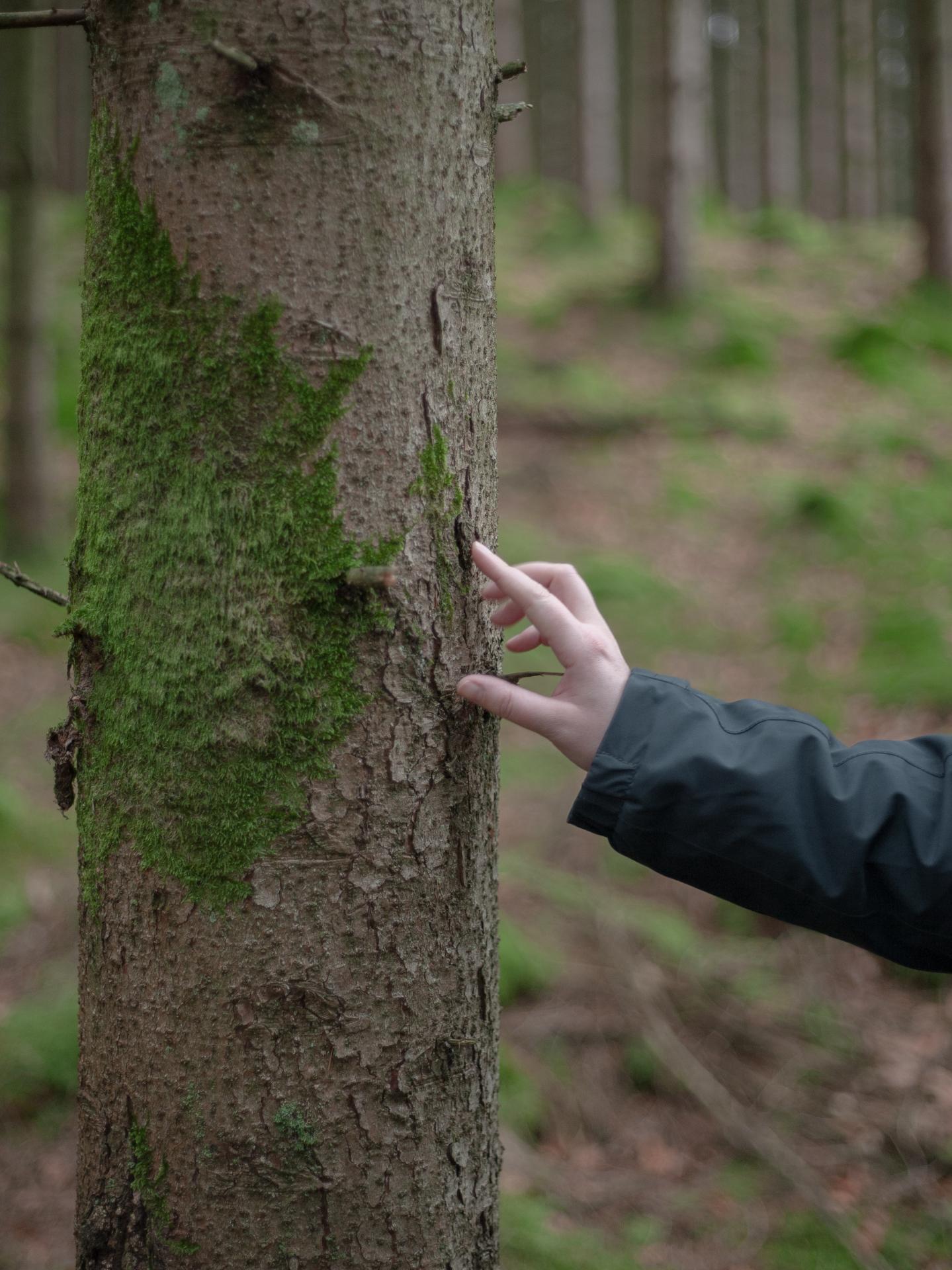Leading the way in sustainable flooring, our floors feature click-flooring solutions designed with the environment in mind. In partnership with our sister company, Välinge Innovation – the pioneer of click flooring – we offer high-quality flooring that’s easy to install and reduces environmental impact. By integrating technologies like Woodura and Nadura we also maximise raw material use and minimise waste. This allows us to produce more flooring from the same amount of timber, leaving more trees in the forest. By choosing our sustainable flooring options, you’re making a conscious decision that benefits both your space and the planet.
Shaping a sustainable future
Bjelin was founded on a commitment to sustainability and forward-thinking design. Innovation drives everything we do – from rethinking how floors are made to finding smarter, greener solutions. Our goal is simple: to create better, more durable floors with less impact on the environment.
Our environmental labels
FSC
The Forest Stewardship Council (FSC) is an international membership organisation promoting responsible management of the world’s forests. FSC members work together to develop the FSC rules, which aim to create forest management practices that best consider environmental and social conditions. Members include environmental organisations, social organisations and economic stakeholders.
Learn more: www.fsc.org
Sundahus
SundaHus work with sustainable development, creating conditions that help customers reduce their environmental impact. Experienced chemists assess the different properties of a product using SundaHus’s evaluation criteria, primarily based on the European Parliament and the Council's CLP Regulation (EU) No. 1272/2008 and the Swedish Chemicals Agency database, PRIO.
Greenguard Gold
A UL GREENGUARD Certification demonstrates product sustainability and commitment to increased health by certifying that the products have low chemical emissions. The Gold Standard includes health-based criteria for additional chemicals to ensure that products are acceptable in environments such as schools and healthcare facilities.
Frequently asked questions concerning sustainability
What environmental labels do your floors have?
Our floors carry a variety of environmental certifications, including FSC, SundaHus evaluations and Greenguard Gold. We’re continually advancing our environmental efforts, with plans to add even more certifications. Explore each product on the website and discover the specific ecolabels your dream floor holds.
Isn't it better to leave trees in their natural environment?
Forests play a vital role in combating global warming, but leaving trees uncared for in their natural environment isn't always beneficial. An unmanaged forest is environmentally neutral, as decomposing trees release as much carbon dioxide as they absorb while growing. In contrast, a well-managed forest grows faster and binds more carbon dioxide, which remains stored in the wood when used as a construction material. Even residual parts, like bark, can be used as sustainable heat sources, replacing energy sources with a higher environmental impact. Environmentally conscious forestry prioritises harvesting less than the forest's growth and protecting areas critical to biodiversity. With our factories located near the forests that supply our wood, we ensure responsible and environmentally friendly logging practices, contributing to a more sustainable future.
How is diversity affected in the forests from which the timber comes?
The raw wood and core materials used in our wood floors are FSC-certified, ensuring sustainable and responsible forestry practices. FSC certification actively protects endangered species in managed forests while promoting biodiversity. Additionally, FSC safeguards the rights of forest workers and local communities, ensuring ethical and sustainable resource management.
Why aren’t all wooden floors eco-friendly?
Traditional wooden floors have faced challenges with durability, and the cost of long planks has remained high. The limited availability of oak
has also restricted production capacity for wood-based flooring to around 10% of the global market. We believe this will change dramatically with Woodura technology, which enables us to produce 10 times more hardened wood flooring from a single oak log compared to traditional parquet. Hardened wood floors are not only stronger but also more affordable than comparable parquet options. To meet this growing demand, Bjelin is building the world’s largest wood flooring factory. This groundbreaking initiative will significantly expand production capacity, making it possible to replace less sustainable flooring materials with environmentally friendly wood floors on a much larger scale.
How can I be sure a hardened wood floor will last?
The Woodura technology behind hardened wood, which enhances both strength and surface durability, was pioneered by our sister company Välinge Innovation as part of a recycling initiative. To ensure the longevity of our floors, we put them to the test in demanding environments right from the start. Some of our test floors have been in use for over 10 years, and the results are outstanding. This technology has been continually optimised since its inception. Our sister company, Välinge Innovation, operates the world’s largest development centre for wood flooring, featuring advanced laboratories, extensive climate chambers, and precision instruments that test floors for impact resistance, durability, stain resistance and noise levels. We can simulate decades of wear to ensure that our floors meet the highest standards of performance and longevity. All of this is aimed at producing the toughest and best flooring available on the market.
How can I recycle or reuse my floor?
All Bjelin floors feature the strongest click system on the market, a technology pioneered by our founders in the 1990s. This means that when it’s time for a change, your floor can easily be lifted, moved to a new room, or even sold – without the need to end up in a landfill. Additionally, our floors can be ground down and repurposed as core materials to create new floors.
The Earth’s lungs
A product’s impact on global warming is largely determined by its carbon dioxide (CO₂) emissions. An Environmental Product Declaration (EPD) provides a comprehensive assessment of a product’s environmental footprint, detailing the greenhouse gases released throughout its lifecycle - from production to disposal or recycling.
Wood, as a flooring material, offers a significant advantage in the fight against climate change since it’s naturally carbon-negative, making it an environmentally positive choice.
Proximity to the forest
We work actively to minimise carbon dioxide emissions from both transportation and manufacturing. A key principle is locating our factories close to the forests in Croatia, to reduce transport distances for wood logs, which contain a high percentage of water. By ensuring that no log needs to travel more than 10–100 km to our facilities, we greatly reduce emissions from transport. In production, most of the energy used to dry the timber comes from bioenergy, generated by burning bark from the logs. Additionally, the majority of the electricity we purchase in Sweden and Croatia comes from carbon-free sources. The positive impact will only grow as we continue investing in energy recovery and solar power.
The environmental impact of forestry
Responsibly managed forests play a vital role in protecting the environment. The timber harvested from these forests stores carbon dioxide for hundreds of years, reducing emissions while being transformed into durable building materials like flooring.
However, not all forestry practices are environmentally beneficial. Unsustainable logging can harm ecosystems when deforestation and degradation outpace natural regrowth. To prevent this, we source FSC-certified timber. The Forest Stewardship Council (FSC) is an independent, international organisation dedicated to promoting responsible forestry through its rigorous certification system, ensuring sustainable practices that protect forests for future generations.
Maximising every log
Wood is a sustainable flooring choice – especially when used efficiently. With the Woodura technology, we create ultra-thin, reinforced wood veneers, maximising each log to produce more flooring with minimal waste. The result is our Woodura Planks and Woodura Herringbone products. Traditional parquet production saws 4.5 mm layers from logs, generating excess sawdust. Our knife-cutting method produces just 0.6 mm surface layers, yielding ten times more flooring per log. We go further with Nadura, transforming wood waste into a durable wood floor.
Reuse and recycling
Long-lasting floors are key to reducing environmental impact. A durable floor with a strong locking system can be removed without damage, then reused in another room or even sold. Additionally, if a floorboard is damaged, it can be ground down and recycled into new board materials, preserving the carbon within the wood. If burned or left to decay, the wood releases the same amount of carbon dioxide it once absorbed – but combustion generates energy that can replace fossil fuels like coal and oil. This makes wood-based products an environmentally smart choice, even at the end of their life cycle.





